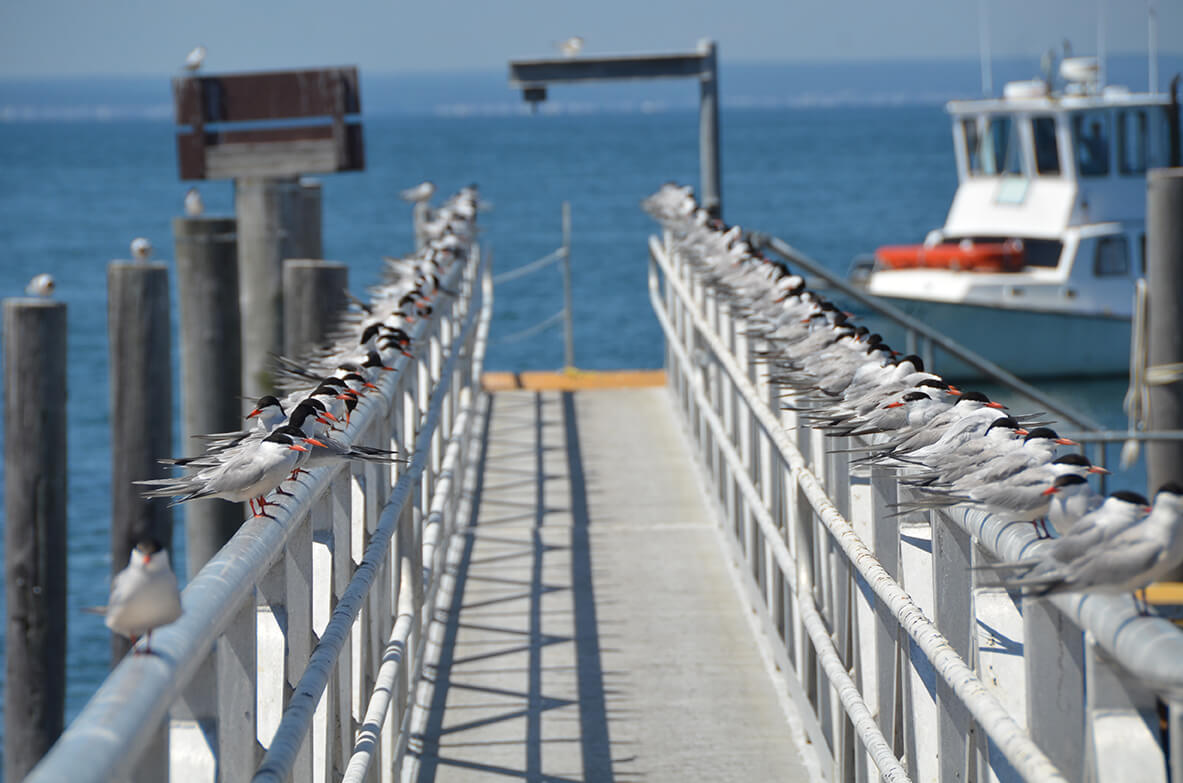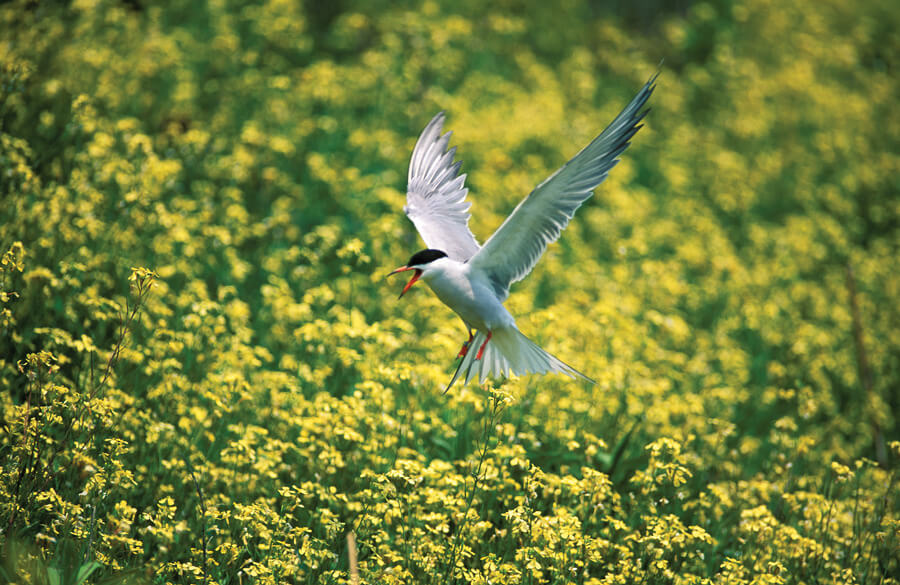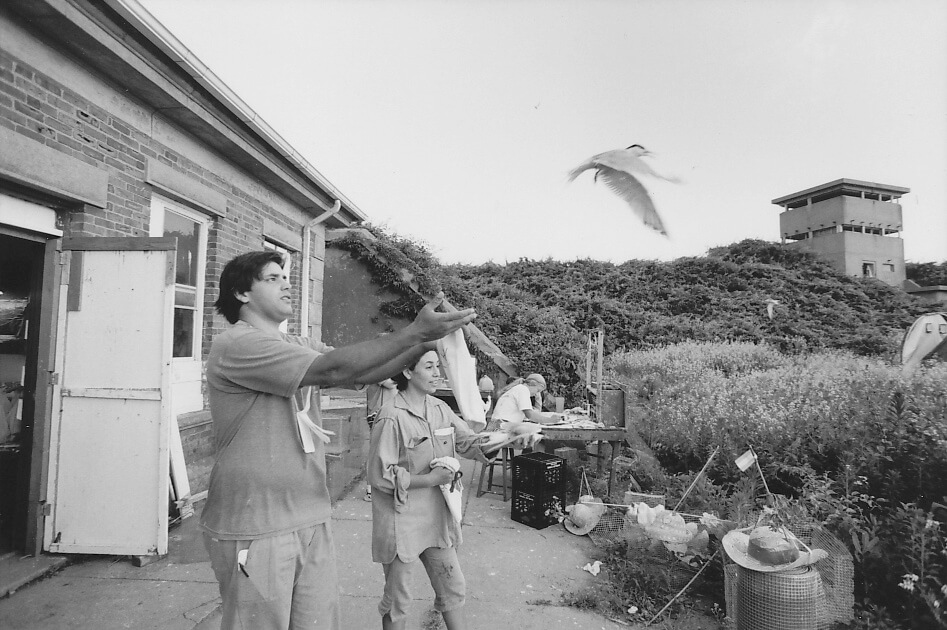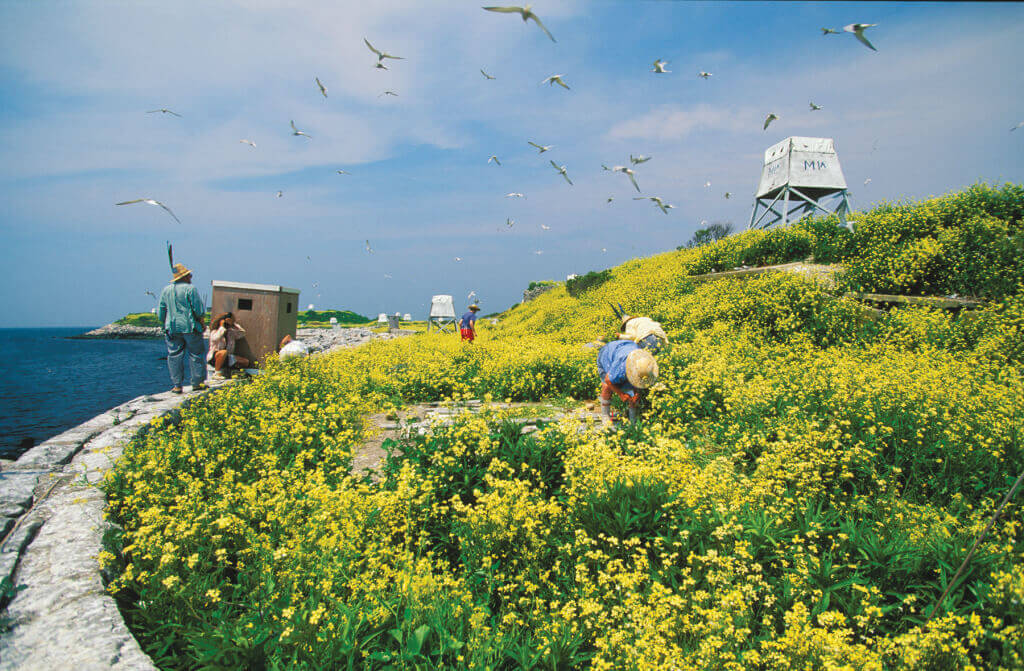For decades, Dr. Hays has worked as an ornithologist with the American Museum of Natural History on Great Gull Island, New York.
- The island is nestled between Long Island and Fishers Island, in the coastal waters of southern New England and New York.
- There, she bands, researches and protects Common Terns, considered threatened by the state, and Roseate Terns, classified as endangered in the U.S.
- The island houses a research station that has been dedicated to studying the tern species since 1969.
- Hays’ study represents the longest longitudinal study of Common and Roseate Terns in the Western Hemisphere.
- Hays and her colleagues, notably Joseph DiCostanzo, have over 600,000 records of the Common Tern based on adult trapping and banding.
- Based on a 2007 article written by Greig Cranna, Dr. Hays and her colleagues had, by that point, banded over 225,000 terns
- Hays has been working on Great Gull Island for over forty-five years!

For years, the terns’ winter behaviour was a mystery. This motivated Dr. Hays to expand her work internationally.
- In 1995, Dr. Hays and her colleagues conducted an investigatory trip in South America, where they discovered thousands of “their” terns in Bahia, Brazil and Punta Rasa, Argentina!
- In addition, they connected with colleagues in Brazil and Argentina, who were researching the very same birds that they were, but thousands of miles away.
With grant support from QLF’s Sounds Conservancy Program, Dr. Hays was able to formally partner with these South American colleagues and extend her research internationally. This move was crucial to understanding and protecting the terns.
Notably, in 1995 on their first survey of the east coast of South America, they discovered Roseate Terns off the southern coast of Bahia, Brazil establishing for the first time where the species spent the nonbreeding season.
- Two years later the Great Gull Island crew began working with Pedro Lima, an enthusiastic netter in Brazil. The data collected with Pedro established a heretofore undescribed trans-Atlantic movement of Roseate and Common Terns between Europe and the coast of Brazil.
 In Argentina in 1995 the Great Gull Islanders estimated they saw 20,000 to 30,000 Common Terns roosting at Punta Rasa.
In Argentina in 1995 the Great Gull Islanders estimated they saw 20,000 to 30,000 Common Terns roosting at Punta Rasa.
- This is the largest concentration of this species they saw along the South American coast in any of their surveys.
- A student they met at Punta Rasa introduced them to Esteban Bremer who was netting Common Terns there. Bremer is a conservation officer with the Fundacion Vida Silvestre Argentina, that supports wildlife conservation for species at risk.
Supported by Sounds Conservancy grants, in 19 of the last 20 years Bremer has brought Argentinean colleagues who net with him to Great Gull Island to help during the peak hatch, the last two weeks in June. They band chicks and trap adults on the newly hatched nests. During the non-breeding season Hays and her colleagues join Bremer and his netters at Punta Rasa, radio-tagging birds and observing their behaviour and feeding patterns. The Great Gull Island Project is very lucky to have had Sounds Conservancy grants to support this long-standing partnership.

Hays and Bremer presented their international collaboration at QLF’s 2006 Alumni Congress.
- In a subsequent QLF publication, The First QLF Alumni Congress, Hays explains, Working together, we hope to map the roosting sites Common and Roseate Terns use during the non-breeding season and heighten awareness of both species in the northern and southern hemispheres. Community involvement is vital for their survival.
Ongoing QLF support has enabled Hays and Bremer to forge the regional-to-international transition of the Common and Roseate Tern project.

Program Publications
- The Sounds Conservancy in Argentina, 2007 (.pdf 1MB)
- The Sounds Conservancy, 2015 (.pdf 11MB)








